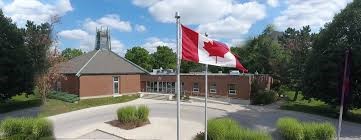London I (Citadel)
London Citadel was opened in 1882 and stands as the oldest active Salvation Army Corps in the Canada and Bermuda Territory.
Though officially the second corps in Canada (opened by Major Moore, Commander of the US, on July 17, 1882), the Army had been active in London, in an unofficial way, since about the third week of May, 1882, when Jack Addie and Joe Ludgate, two recent emigrants from England, began their open-air meetings along Army lines. When, in June 1882, the movement had gained momentum, Army soldiers began holding meetings indoors, “in a small room on the top flight of the Baker Block and at the Boys’ Home on King Street.” Addie and Ludgate, both of whom held full-time jobs, turned the leadership of their contingent over to Walter ‘Happy’ Bailey who told the London Advertiser that he had been in contact with Major Moore and that he expected that his group would soon become “a regularly authorized branch of the Grand Army of the United States and England, of which General Booth is the head.” Moore did indeed arrive on July 17 (having been to Toronto two days earlier), and officially launched the work. Walter Bailey became a Captain and London’s first Corps Officer. Lieut. Courts, from Toronto, became his assistant.
In late July, however, dissension arose and Courts, found guilty of 'mutinous' action (trying to start his own organization), was 'drummed out.' According to the Free Press (July 31, 1882), Bailey was transferred to Pennsylvania, because he too seems to have been too ambitious (in Oct. he came back to London as leader of a rival group called 'The Hosannah banner'). In the meantime, the corps was run by volunteers such as Addie and Ludgate, until Capt. 'Shouting' Annie Shirley arrived to take over on September 3 (she apparently left her husband behind in Philadelphia). On Oct. 10, 1882, Major Moore was back: this time to present the 'colours,' announce that the old Congregational Church on King Street had been secured for an Army barracks, and to farewell Jack Addie for Brooklyn, USA. The old church-cum-barracks was destroyed by fire in early 1888. (see WC, Feb. 18, 1888 for picture).
After using the Mechanics' Hall and City Hall, the YMCA building on Clarence Street was purchased. In 1970 the Citadel Corps vacated its original site, occupying its newest location on Springbank Drive in September 1971.
One of the interesting features of early London warfare is the constant battle with civic authorities regarding the right to march. In July 1883, for example, when Capt. Shirley was arrested, the magistrate offered to withdraw the charge if she would promise to stop beating the drum. The Toronto Mail takes up the story: “Capt. Shirley said she could not do so, as it was for the Lord. His Worship said the defendant might be fined heavily, but as this was the first time they had appeared he would impose a fine of $5 each. Capt. Shirley:-- ‘Give us the most, we were the worst.’ His Worship said in default he would sentence Parsons and Addie to one week and Shirley to one day in gaol. “Capt. Shirley:— “I’ll take the day, lad. You had better keep us, for we will be worse again.” His worship:— ‘You had better not.’ Capt. Shirley:— ‘We must, it’s` for Jesus.’” (July 11, 1883). [Illustrated history in WC, Oct. 28 & Nov. 4, 1893]
CANADA AND BERMUDA TERRITORY

Status: Open
Date Opened: July 17, 1882
Website: https://www.londoncitadel.ca/
City: London
Province: Ontario
Division: Ontario
Type of MU: Corps (Church)
First Officer: Captain Walter Bailey
Current Officers: Captains Nicolas and Heather Samuel
CANADA AND BERMUDA TERRITORY
Click here for the a complete list of all Corps/Churches
Part of a series on:





